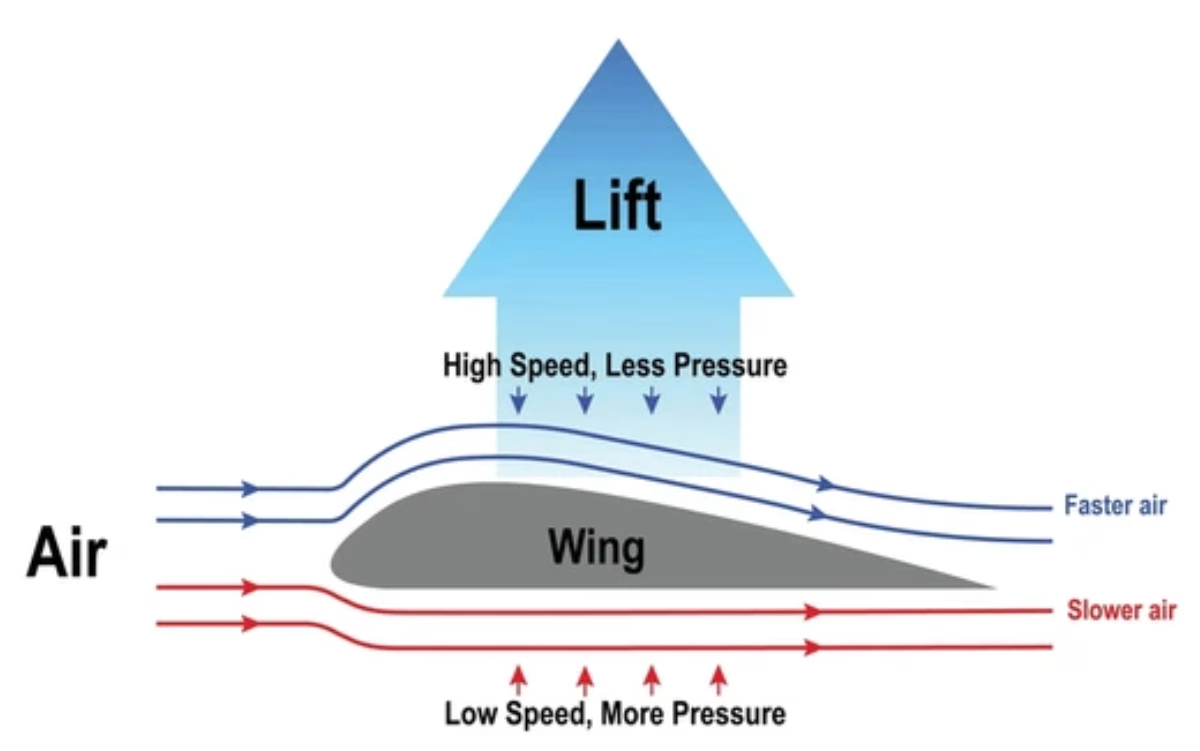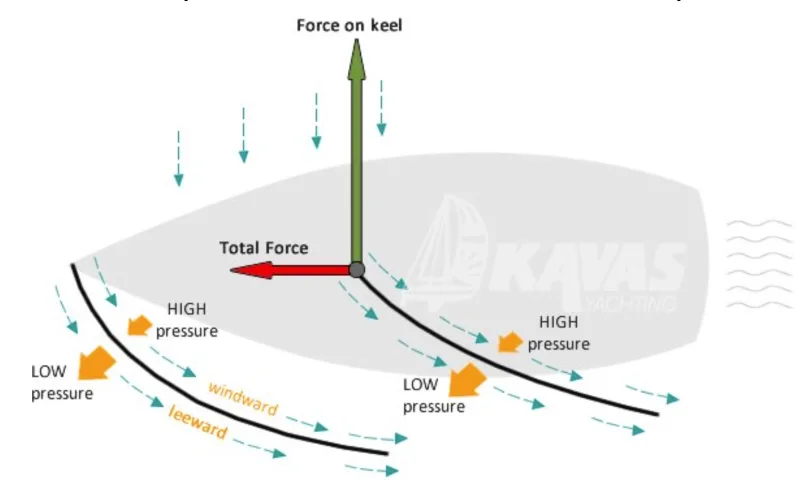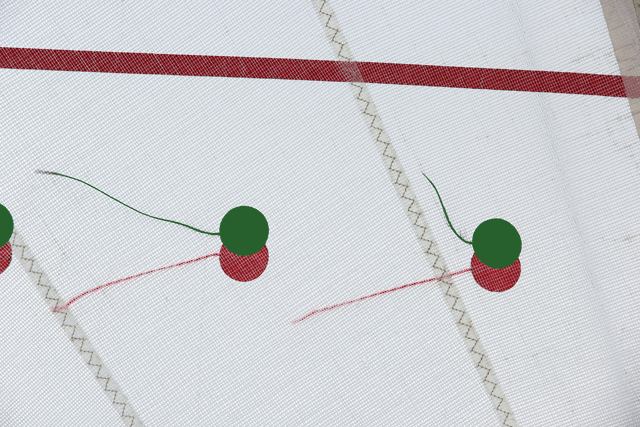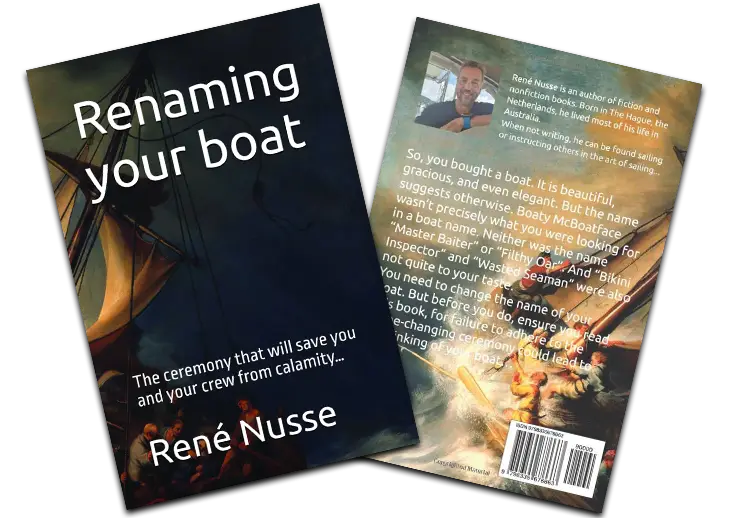Shaping Your Sails for Racing: A Guide to Speed and Control
When it comes to sailboat racing, sail trim is your most powerful performance tool. Even the fastest hull and best-prepared rig can’t deliver results if the sails aren’t shaped correctly. Proper sail shaping maximises lift, reduces drag, balances the helm, and lets you adapt to changing wind and sea conditions.
This guide covers the fundamentals of shaping your sails for racing — from sail controls to trim strategies across all points of sail.
1. The Aerodynamics of Sails
Think of a sail as an airfoil. Just like an aeroplane wing, the shape of the wing determines how efficiently it generates lift.

Now position the same wing vertically. Rather than an upwards lift, the wing (sail) now creates a forward lift, finding a balance between the keel’s natural direction and that of the sail.

Key shape elements:
Draft depth: How full or flat the sail is.
Draft position: Where the deepest part of the sail sits (forward or aft).
Twist: How much the angle of attack changes from bottom to top.
Entry and exit: The leading and trailing edges of the sail, controlling airflow and drag.
Racing is about controlling these variables to balance power and efficiency.
2. Primary Sail Controls
Mainsail Controls
- Halyard tension: Adjusts luff tension; too loose = draft aft and power, too tight = flat sail. Tightening the halyard will move the draft forward. Easing the halyard will move it aft.
Cunningham: Moves draft position further forward by tensioning the luff.
Mainsheet: Controls leech tension (power vs. twist).
Traveller: Adjusts boom angle without changing leech tension.
Backstay: Bends mast to flatten main, increases forestay tension to flatten headsail.
Headsail Controls
Halyard tension: Adjusts luff tension; too loose = draft aft and power, too tight = flat sail.
Jib leads (cars): Control twist; forward = more power, aft = flatter leech.
Sheet tension: Fine-tunes entry angle and leech tension.
3. Upwind Sail Shape
Light Air (0–8 knots):
Full sails with draft slightly aft for maximum power.
Loose outhaul, light halyard tension.
Jib leads slightly forward for a tighter leech.
Traveller centred or slightly above centre to keep the boom on the centerline.
Moderate Air (8–15 knots):
Flatten sails slightly for speed.
Medium halyard and Cunningham tension.
Adjust the traveller to keep the telltales streaming evenly.
Jib trimmed flatter with cars in a balanced position.
Heavy Air (15+ knots):
Flatten sails aggressively to depower.
Tight outhaul and halyard; heavy cunningham.
Backstay on to bend the mast and flatten the main.
Traveller down, mainsheet tensioned to control leech.
Jib cars aft to open the leech and spill excess power.
4. Downwind Sail Shape
With Spinnaker:
Keep luff just on the edge of collapse for maximum projection.
Ease the halyard slightly for a rounder entry.
Pole height and angle control twist and shape.
With Jib Only (no spinnaker class):
Ease sheet until leech telltales stream.
Move leads forward to keep the leech tension.
Ease the halyard for a fuller, more powerful shape.
With Main:
Ease outhaul for depth.
Ease the vang to allow twist (unless rolling needs to be controlled).
A preventer or boom brake may help stabilise.
5. Balancing Power and Control
Helm feel: Aim for slight weather helm. Too much means sails are too full aft; flatten the main or move the draft forward.
Heel angle: Excessive heel = drag and loss of speed. Flatten sails or depower the main.
Boat speed vs. pointing: Sometimes, footing off slightly with fuller sails produces more speed, especially in chop.
6. Fine-Tuning with Telltales and Instruments
Telltales (jib luff):
Both streaming = perfect trim.
Inside lifting = sheet in or bear away.
Outside lifting = ease sheet or head up.
Leech telltales (main and jib): Should be streaming 80–90% of the time; stalling = over-trimmed.
Instruments: Use speed, heel angle, and wind angle to confirm adjustments.
7. Racing Mindset for Sail Shape
Anticipate changes: Adjust before gusts hit, not after.
Keep crew communication clear: Trimmers, helm, and tactician must sync.
Log settings: Note rig tensions and trim for different wind strengths; repeatable settings save time.
Never stop trimming: Constant, minor tweaks = free boat lengths every leg.
Final Thought
Shaping sails for racing is both science and art. The science lies in understanding draft, twist, and tension; the art comes from feeling the boat’s response, watching telltales, and sensing balance. Racers who master this interplay gain not just speed, but control, consistency, and confidence on the racecourse.
Author
-

Rene is a keelboat instructor and sailing coach in the Mandurah area WA. He is also the author of several books about sailing including "The Book of Maritime Idioms" and "Renaming your boat".
View all posts



